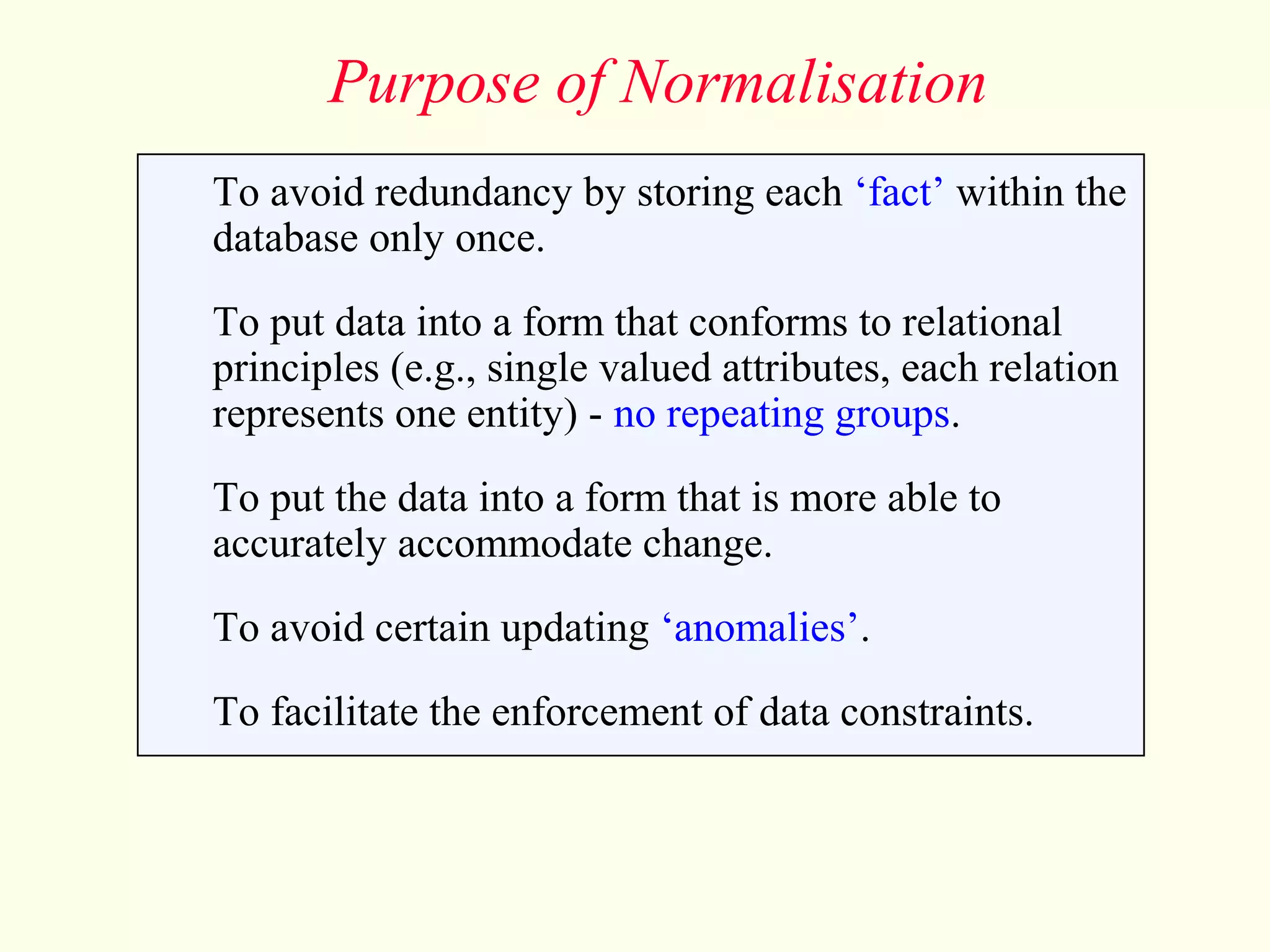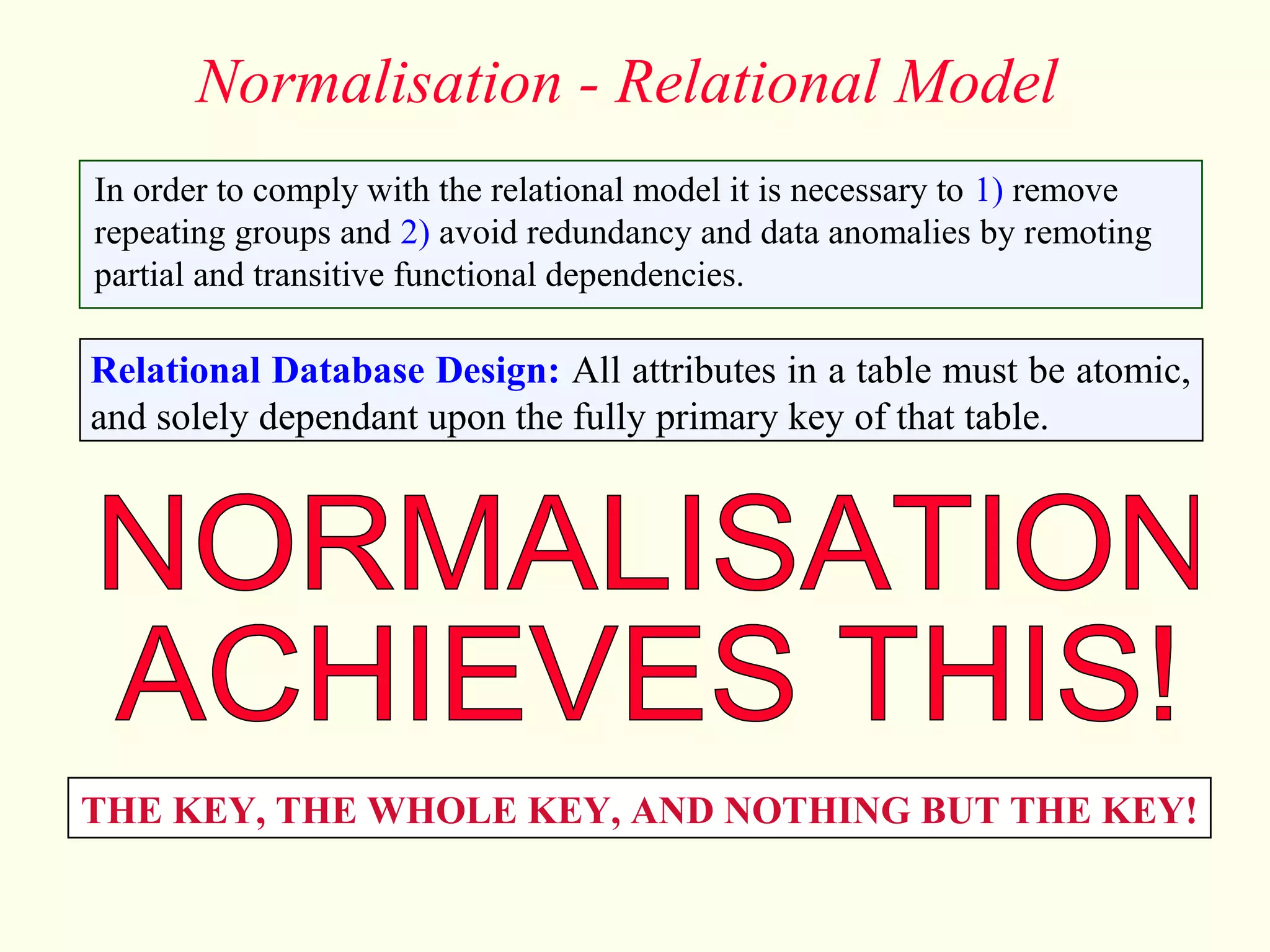This document provides a lecture plan on normalization. It begins by defining the purpose of normalization as avoiding redundancy and anomalies. It then covers concepts like functional and transitive dependencies. The document outlines the stages of normalization from unnormalized form to third normal form. An example is provided to demonstrate transforming a relation from unnormalized to first, second, and third normal form through removing repeating groups and dependencies. Key topics covered include removing redundancy, updating and deletion anomalies, and the different types of dependencies.


















